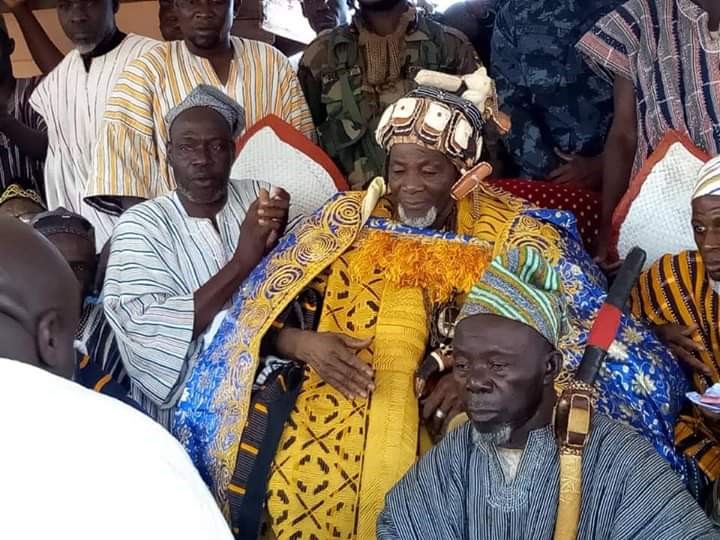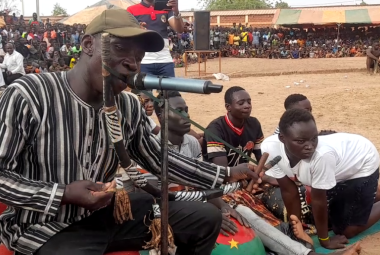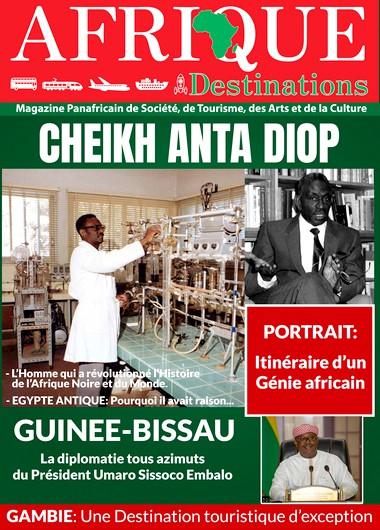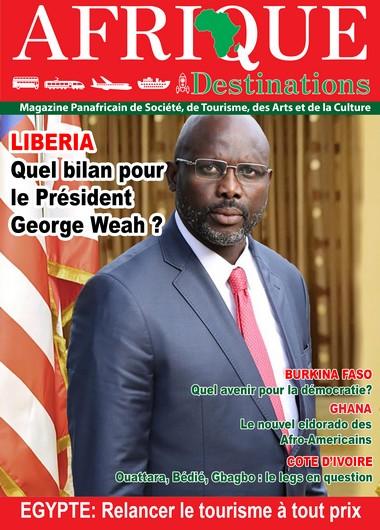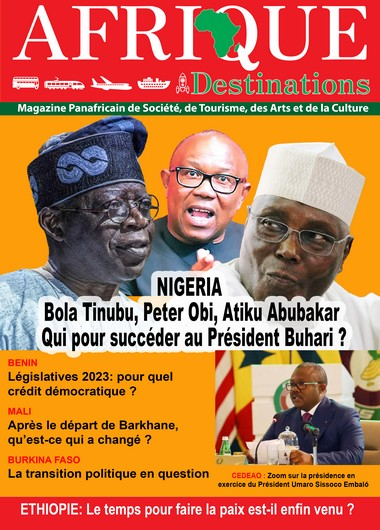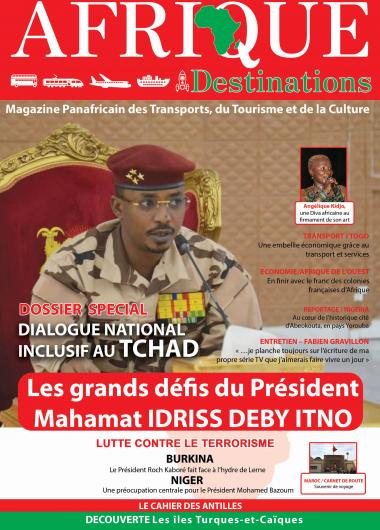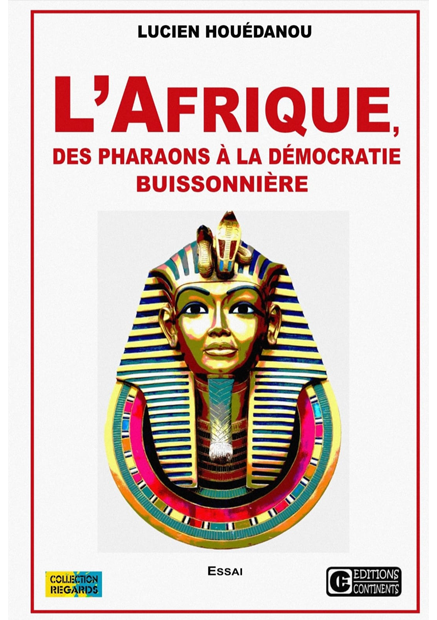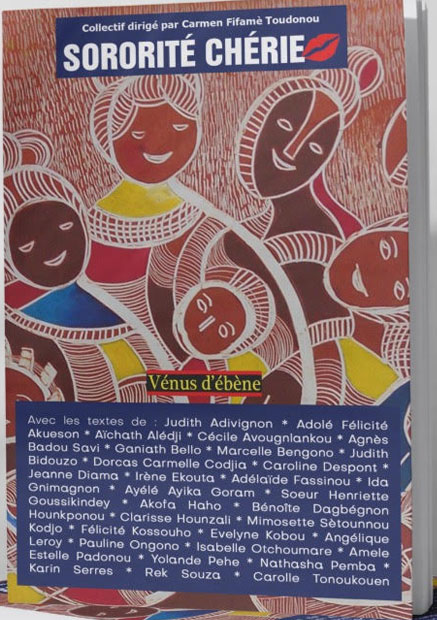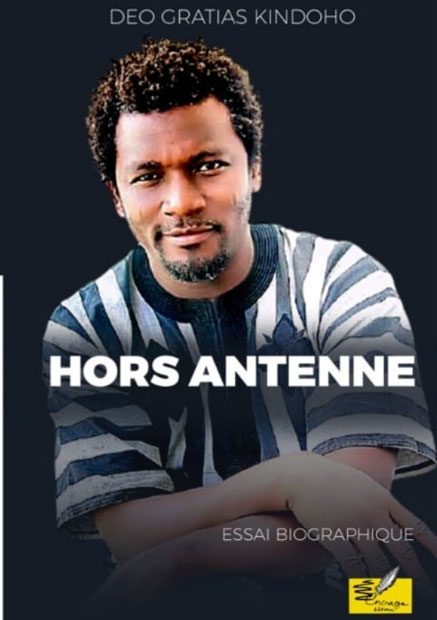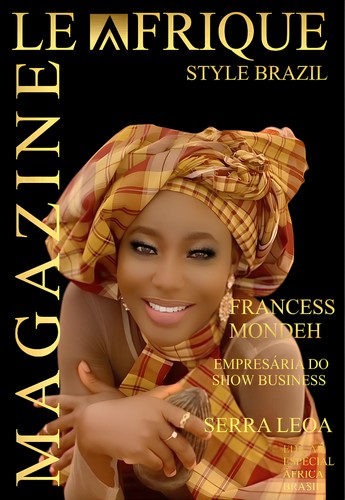From the shores of Lake Chad to Northern Ghana via Liptako-Gourma, the long migration of those whom some called Wassangari and the other Proto-Mossi gave birth to several peoples today in West Africa. Among the best known, there are the chiefdoms of Northern Ghana, from which the Moose of Burkina Faso also derive, among the most numerous and best known of the so-called Gur peoples. But over the centuries, as kinship ties loosened, some formerly common practices also evolved separately or were abandoned altogether.
“In studies of the oral history of the Moaga country, the accent has been placed on the Moose migrants, founders of the chiefdoms. Listening to the stories about the history of each Moaga chiefdom, we find the theme of migration. The overriding image of the founding of Moogo is that of outsiders who have come to conquer and rule the local people. The descendants of conquering foreigners are called nabiise or nakombse, translated in French literature as "people of power"; the people subjected to the beginning of the foundation of the chieftaincy are the tengabiise, "people of the land (*1)".
By taking control of present-day Burkina Faso on one side and present-day Gold Coast or Ghana on the other, the French and the English respectively imposed their hegemony on geographical spaces that are rather physical. They also forced the peoples thus conquered to learn their languages and fit into their model of society. However, these colonial powers, who were primarily interested only in the wealth of their colonies, could not prevent all the peoples living in the newly conquered territories from continuing to observe the habits and customs of their Ancestors.
Ancestrality is a fundamental data in the research and the relation of the events of the past. The uses of ancestrality should not be seen solely through the prism of claims or negatives. Above all, they must participate in remembering the past and restoring history. Whether we like it or not, we always consciously or unconsciously keep in ourselves a more or less close or distant link with our Ancestors. The worship of the Ancestors which is so strongly anchored and maintained even today in Africa constitutes one of these indissoluble links with the past. Whatever the shortcomings of the collective memory on this subject, the daily observance of certain traditional practices allows the present generations not to completely forget their origins. In many societies, baptisms and funerals are a reminder of this at times, without it being necessary to assail one or another with questions about the past. In the sense that any birth is considered a reincarnation of a deceased Ancestor. And this is often the occasion to evoke its more or less distant roots.
In his Notes on the Mossi, Prost can thus recall, among other exchanges of old good practices, that: “upon his appointment, the chief of Sanga will be enthroned in Bawku. When a Dourotenga chief dies, Bawku and Gãmbaaga are also notified, then Gambaga has Yandé notified (*2)”.
Pageard in his “Reflections on the History of the Mossi. " writing :
“The moral link which unites the chiefs of Ouagadougou and Ouahigouya to Gambagha is, on the other hand, certain, although the sendings or ritual sacrifices on the tombs of Gambagha during the death of Mogho-Naba have fallen into disuse. The Mossi are called "Yab-gensé" (sing.: Ya-biga) by the inhabitants of Gambagha. This last city is indeed the "Yab-iri" or "Yestenga", that is to say the country of the maternal ancestors, of the Mossi (*3) »
“According to the traditions collected in Tenkodogo, when Yẽnega died, his body was transported to Gãmbaaga, to be buried there. His tomb and that of Riale, which would be in Gãmbaaga, are the object of veneration and a place of pilgrimage for the Nanãmbse of Ouagadougou. Until recently, on the death of each naaba, a horse was chosen from his stable, and a woman from his harem, who were to be sent there to be sacrificed to the ghosts of Yẽnega.
Delafosse (1912, t.II, p.133), affirms that formerly at the death of each Moro Naba, one of his wives and one of his horses was sent to Gãmbaaga and they were immolated on the tomb of Yennenga, the founding mother of the kingdom. His tomb became the object of great veneration and a place of pilgrimage for the Moose rulers.
Ratesier maintains the same thing in his "Black of Yatenga" (1917) with regard to the Naba of Ouahigouya (*4)".
For having personally experienced a trip of the Naba from Tenkodogo to Gambaga, Junzo Kawada says: “During his visit to Gambaga, in addition to the white horse which has already been mentioned, the king of Tenkodogo had brought to the Gimbadaana twenty thousand cedis (Ghanaian currency ), a bottle of Scotch whisky, and a white ram and rooster. In return, Tiya gave his host an ox and one of his teenage granddaughters as a wife. From this union was born in 1995 a daughter whom the king of Tenkodogo named Yẽnenga. This new Yẽnenga, very pampered by her father, grew up at the court of Tenkodogo, symbolizing by her person the fact that the Mosi dynasty of Tenkodogo originated from Gambaga (*5)”.
Some practices, mainly because they are too retrograde or infringing on human rights, have been banned. And, gradually, they were discarded and doomed to a disappearance that is hard to believe in just a few generations. This is the case of those which consisted, for example, at each death of the Naba in sending young women to be buried or immolated on the tomb of Yennega in Gambaga. An archaic practice that is reminiscent of the burials of Predynastic Egypt and even the beginnings of Pharaonic Egypt.
According to Tiendrébeogo (1964, 168.), on the occasion of the death of Moogo-Naaba, sent "weapons, horses, young women, oxen, a captive and salt" to the chief of Gãmbaaga as well as to the head of Bingo (Fada N'Gourma). And he specifies that: "These shipments were made for the last time when Naba Koutou died (1871)".
Certain traditions unfortunately disappear not because they are contrary to the new mores of new times than because, through a certain negligence, those who are responsible for overseeing their transmission lose sight of the historical importance they hold.
Fortunately, there are exchanges between the Moose and the Gourmantché of Burkina Faso and the Nanoumba-Dagomba-Mamproussi of Northern Ghana. Several centuries after the founding of the Moose Kingdoms, it is interesting to note that these relations have not faded between the chiefdoms of present-day Burkina Faso and those of present-day Northern Ghana. Despite the creation of modern states inspired by colonizers who came this time from the West, both continued to observe a certain number of habits and customs of their own. And these relationships have lasted for a long time despite the weight of the great monotheistic religions on ancestral traditions.
Between the Natemba whose spiritual center is Tayakou and the Baatombu of the Kingdom of Nikki, the links which allowed each other to remember that they have the same Ancestors ended in the 1970s. Before this time, no King of Nikki did not organize the ritual of the Gaani without respecting the protocol that this implied in accordance with the ties of kinship which unites them. Namely, dispatch a delegation from Nikki to go to Tayakou inform the Tayakou tribal chiefs and ask them to send a delegation to Nikki to sacrifice certain habits and customs before their arrival and their establishment between Bussa, Kayama and Nikki . This is an open secret for the Ancients or those who are familiar with the history of their origins. The Wassangari or Ouassangari indeed belong to the same Proto-Moose. And, some Natemba tribes, in this case the Tribe of Nanfa Kwèba or Descendants of Scorpion, are formerly of the same royal patrilineage as the Ouasangari of Nikki. Among the current Natemba, the Elders knew this and had kept the memory of these family ties.
In Northern Ghana, among the Nanumba-Dagomba-Mamprusi, some of these ancient practices, including rituals marking the enthronement of Kings, have disappeared, due to the conversion of a good fringe of these peoples to Islam. In the past, it was impossible to be a Muslim or bear a Muslim name and claim royalty. But today, it does not bother anyone. Even if the rituals to be performed to access it may contrast with certain Muslim precepts. And only the ancestral names of the Kings still make it possible to trace their origins in a sure and certain way.
Regarding the formation of these peoples and their relationship with the Dagara in particular, opinions are very divided and controversial between different researchers. Although it remains a hypothesis to this day, the theory suggesting that they could have come into contact with the Dagara from inside the region of present-day Fada N'Gurma before pushing them back to their current location between the borders of the Burkina Faso and Ghana remains plausible. It would then like to say that the Ancestors of the Dagara lived there when those of the Dagomba arrived.
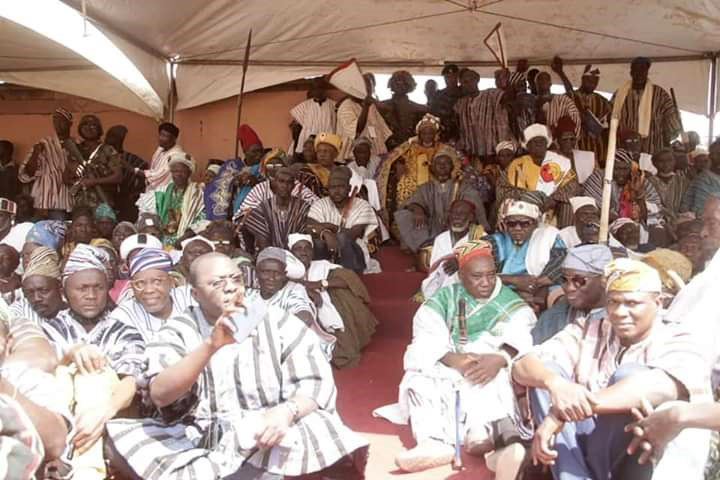
“These bands of conquerors could either be simply adventurers or splinters from centralized kingdoms, traveling with few (if not no) women. They intermarried with indigenous women and adopted some of their cultural traits (notably language) while rising above them as the ruling class. The mixing of such foreign invaders with the indigenous Dagara and other minority ethnic groups gave rise to a new ethnic group, the Dagomba. The bulk of the dagara mass, refusing to submit, preferred to distance themselves, thus preserving their identity. The same process could be observed in the constitution of the Moose kingdom. The Nunuma and the Nyõnyõse who refused to accept the authority of Oubri, the founder of the kingdom, had to emigrate towards the black Volta and in the "Kipirsi", where we find them today; those who remained were absorbed by the invading flood coming from Dagomba by submitting to their command. Over time, they gradually identified with the foreign conquerors and formed with them a single people, that of the Moose. Such must be the original relationship between Dagara and Dagomba (*6)”.
Valère Somé is absolutely right about the modus operandi of these "adventurers" or "dissidents" of centralized kingdoms. For indeed, one must imagine a lot of infighting within the group of invading foreigners that form the Proto-Moose or Proto-Dagomba, whatever they are called at this stage in Northern Ghana and even long before. All things considered, the Natemba are Mamprugu dissidents beyond legend. All the information concerning the history of this people agrees to accredit the fact that they decided to break with theirs for reasons which are on the other hand difficult to specify.
It is obvious that from the start of this mission of conquest, there were not many women who accompanied those who were for the most part only warriors. Those who were to marry most often did so with women from local populations. It therefore goes without saying that there was interbreeding between the Dagara and the invaders and ancestors of the Mamprusi-Dagomba-Nanumba. However, there is no reason to say, as many Western researchers of the time did, that the Dagara are part of the Dagomba who broke away from their original group as did the Natemba, the last priests ultra-conservatives of the group.
The Natemba oral traditions which show that they knew the Dagara well and for a very long time would never confuse them with a branch of their Ancestors. Because, even if they were finally invaded and integrated among the new arrivals, they had opposed them such a fierce resistance which would also be at the origin of the name of Dagara that they would have given them, namely: "the arrow shooters”. Without it being known what is numerically the proportion of Dagara submissive, it obviously appears that a core has categorically refused submission and has remained independent until the present day. And it is to them that we owe the survival of Dagara as a people and Dagaare as a language. We must therefore consider as a confusion the ideas formerly put forward by Maurice Delafosse, the Rev. Father Hébert and many others according to which these two peoples Dagara and Dagomba would form only one at the start. Natemba traditions categorically contradict this version. They have well preserved the principle of intermarriage to remember it without a doubt.
In an article from GhanaWeb that summarizes the History of the Peoples of Northern Ghana, we can read among other things:
“The Mamprusi with their Kingdom Mamprugu is one of the earliest known states north of what is now Ghana. Their Kingdom flourished in the twelfth and fourteenth centuries. The Mamprusi Kingdom was founded by the Great Naa Gnanwah/Gbewah at Pusiga, a village 14 kilometres from Bawku. The Kingdom spans most of the Northern and Upper Eastern Regions of Ghana, and into west African nation of Burkina Faso. Thus, established this kingdom as the pre-eminent of its kind, and the only kingdom in present-day Ghana whose relevence and authority cuts across national boundaries on the weight of its humble supremacy.
They are believed to be descended from Na Gbewa, also known as Na Nedega. Of the four peoples/groups descended from the loins of Na Gbewa, the Mamprusi are the leaders. The Dagomba, Nanumba and even the Mossi recognize them among themselves as the final authority. As a result, the King of the Mossi to this day is enskinnned by the Nayiri - the King of Mamprugu. Mamprusi’s revere the hallowed grounds of Bawku as their ancestral home, their origin. That is why Naa Gbewah’s tomb in Pusiga, is a shrine of repute to this day. It is believed that his disappearance was subterranean, one of the marvels of Northern Ghana, and many ethnicities hold to agree with this uncommon historical account. It was after his death that his children moved farther afield and founded other kingdoms, namely: Dagbon and Nanum (*7)”.
As we can see, the country baptized Ghana by the first president of the former independent Gold Coast (Country of Gold), the pan-Africanist Kwame Nkrumah, and this in memory of the former Empire of Ghana or Wagadou between present-day Mali, Mauritania and Senegal is like its illustrious predecessor. A land from which were born, as if by splitting, several branches of many peoples that we know today in West Africa.
By Marcus Boni Teiga
*1 – Sabine Luning, Les chefs de terre à Maane, Le discours sur la répartition des territoires et le voisinage (province de Sanmatenga), Histoire du peuplement et relations interethniques au Burkina Faso, Sous la direction de Richard Kuba, Carola Lentz et Claude Nurukyor Somda, KARTHALA, 2003
*2 – R. P. Prost, Notes sur les Mossi, 1953
*3 – Robert Pageard, Réflexions sur l'histoire des Mossi, L’Homme, II (1) :111-115, 1962
*4 - Valère Somé, Espace scientifique", n° 009 - octobre- décembre 2007
*5 - Junzo Kawada, Genèse et dynamique de la royauté : les Mosi méridionaux (Burkina Faso). 2002, pp. 370-376)
*6 – Valère Somé, Les Dagara du Burkina Faso: Origine et migrations (1ère partie), Une recomposition d'extraits de la thèse de doctorat de l'auteur. Publiée dans « Espace scientifique », Revue de vulgarisation de l’INSS. N° 10 Janv-Fév-Mars 2008,pp.27-35 : https://valere-some.blog4ever.com/les-dagara-du-burkina-faso-origine-et-migrations-1ere-partie
*7 - Mamprusi people: Ghana's ancient people in the north, GhanaWeb (Source: ghanaianmuseum.com), Sunday, 19 July 2020 : https://www.ghanaweb.com/GhanaHomePage/NewsArchive/Mamprusi-people-Ghana-s-ancient-people-in-the-north-1011085



